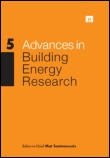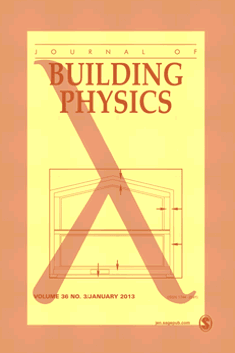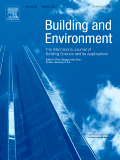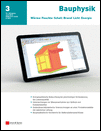
Journal of Green Building
Scope & Guideline
Fostering Innovations in Eco-Conscious Architecture
Introduction
Aims and Scopes
- Sustainable Building Design:
Research on innovative design strategies that minimize environmental impact, optimize resource use, and enhance occupant health and well-being. - Energy Efficiency and Renewable Energy:
Studies focused on improving energy performance through renewable energy integration, energy-efficient technologies, and building retrofitting strategies. - Material Science and Green Construction Materials:
Exploration of sustainable materials, including biocomposites and recycled materials, aimed at reducing the carbon footprint of construction. - Indoor Environmental Quality:
Investigations into factors affecting indoor air quality, thermal comfort, and lighting, enhancing the health and productivity of building occupants. - Building Performance Evaluation and Optimization:
Analytical approaches to assess and optimize the performance of buildings using simulation tools, life cycle assessments, and empirical studies. - Policy and Framework Development:
Research that addresses regulatory frameworks, green building certification systems, and policies that promote sustainable building practices.
Trending and Emerging
- Resilience and Adaptation Strategies:
An increasing focus on resilience in green building design, addressing how buildings can adapt to climate change impacts, such as extreme weather events. - Integration of Smart Technologies:
The rise of smart building technologies, including IoT and AI in energy management systems, showcases a trend towards more efficient and adaptive building operations. - Biophilic Design and Nature-Based Solutions:
Growing interest in incorporating natural elements into building design to enhance occupant well-being and environmental performance. - Sustainable Urban Development:
Research emphasizing the role of green buildings within the broader context of sustainable urban planning and development, highlighting the interconnectivity of buildings and urban ecosystems. - Life Cycle Assessment and Circular Economy:
A trend towards comprehensive life cycle assessments that evaluate the environmental impact of building materials and promote circular economy principles in construction.
Declining or Waning
- Traditional Construction Methods:
There has been a noticeable decrease in research focused on conventional building techniques, as interest shifts towards innovative and sustainable alternatives. - Basic Energy Simulation Techniques:
The emphasis on basic energy modeling methods is waning as more sophisticated simulation tools and methodologies gain traction. - General Awareness and Education on Sustainability:
While still important, the foundational discussions on sustainability awareness are being overshadowed by more technical and applied research topics. - Case Studies with Limited Scope:
The prevalence of isolated case studies without broader applicability is decreasing, as researchers seek to derive generalizable insights applicable across diverse contexts.
Similar Journals

Advances in Building Energy Research
Unlocking Insights in Energy Conservation for ArchitectureAdvances in Building Energy Research is a pivotal journal dedicated to the scholarly exploration of energy efficiency and sustainable practices within the building and construction sector. Published by Taylor & Francis Ltd from the United Kingdom, this journal provides a rich platform for researchers, industry professionals, and students interested in the latest advancements and methodologies that drive energy conservation in architecture and engineering. With an impressive 2023 Scopus ranking of #64 out of 223 in the Building and Construction category and a notable Q2 category quartile, the journal occupies a significant position in its field, emphasizing high-quality, peer-reviewed research that meets the needs of a global audience. Though it operates under a subscription model, its contributions are invaluable for advancing knowledge that addresses the urgent challenges of energy consumption and sustainability in built environments. Spanning research published from 2007 to 2024, this journal continues to be an essential resource for those seeking innovative solutions and insights into building energy performance.

Engineering Reports
Exploring interdisciplinary solutions for tomorrow's challenges.Engineering Reports is a premier open-access journal published by Wiley, dedicated to advancing the fields of Engineering and Computer Science. Since its inception in 2019, this journal has rapidly gained recognition, achieving a commendable Q2 ranking in both the engineering and computer science categories in 2023, evidencing its impactful contributions to the scientific community. With an impressive Scopus rank of #70/307 in General Engineering and #63/232 in General Computer Science, the journal is well-positioned to disseminate cutting-edge research and foster innovation. Researchers, professionals, and students will find value in its comprehensive scope, which includes emerging technologies and interdisciplinary studies, making it an essential resource for anyone involved in these dynamic fields. Accessible online, Engineering Reports aims to bridge the gap between complex engineering theories and practical applications, enhancing collaboration and knowledge sharing globally.

Russian Journal of Building Construction and Architecture
Exploring Sustainable Solutions for Modern ConstructionRussian Journal of Building Construction and Architecture (ISSN: 2542-0526; E-ISSN: 2542-0526), published by the esteemed Voronezh State Technical University, serves as a vital platform for disseminating innovative research and practical applications in the fields of building construction and architecture. This journal, situated in Voronezh, Russia, aims to explore both the theoretical and empirical aspects of contemporary architecture and construction practices, fostering a robust dialogue among researchers, professionals, and academics. With an emphasis on open access to knowledge, the journal significantly contributes to global discourse by ensuring that findings are accessible to a wide audience. Underlining the importance of sustainable development and cutting-edge technologies in construction, the journal strives to publish high-quality research that addresses the challenges faced in today’s building environment, making it an invaluable resource for those committed to advancing the industry.

Journal of Building Physics
Pioneering Insights for Enhanced Building PracticesThe Journal of Building Physics, published by SAGE PUBLICATIONS LTD, has established itself as a leading publication within the fields of Building and Construction as well as Materials Science. With a robust Scopus ranking, including a commendable Q2 designation in both categories in 2023, this journal serves as a crucial platform for researchers and professionals aiming to advance the understanding of building performance and thermal dynamics. Operating from the vibrant academic landscape of the United Kingdom, the journal showcases innovative research and critical analyses that enhance sustainable building practices, contributing significantly to the literature from 2000 to 2024. Though it does not currently offer open access, the Journal of Building Physics continues to publish highly-cited work that resonates with its audience, facilitating knowledge exchange and encouraging scholarly dialogue among students, practitioners, and researchers eager to push the boundaries of building sciences.

International Journal of Built Environment and Sustainability
Bridging Theory and Practice for a Sustainable TomorrowInternational Journal of Built Environment and Sustainability, published by PENERBIT UTM PRESS, serves as a pivotal platform for the dissemination of research in the fields of architecture, urban planning, and sustainable development. With an E-ISSN of 2289-8948 and having embraced Open Access since 2014, this journal ensures that critical findings in built environment research are accessible to a global audience, fostering innovation and collaboration among researchers, professionals, and students. Although the H-index and specific scope are currently not detailed, the journal's commitment to advancing sustainable practices in the built environment makes it an invaluable resource for those dedicated to tackling the pressing challenges of sustainability in our communities. As part of its mission, the journal prioritizes high-quality, peer-reviewed articles that contribute to both academic theory and practical applications, solidifying its role in shaping the future of our built environments.

Jurnal Kejuruteraan
Pioneering Research for Tomorrow's Engineering Challenges.Jurnal Kejuruteraan, published by UKM PRESS, serves as a pivotal platform for disseminating high-quality research in the field of engineering. With an ISSN of 0128-0198 and E-ISSN of 2289-7526, this esteemed journal has embraced *Open Access* since 1989, ensuring that valuable scholarly contributions are readily available to an expansive audience, including researchers, professionals, and students. Based in Bangi, Selangor, Malaysia, the journal reflects a commitment to advancing knowledge and innovation within the engineering discipline, inclusive of subfields like civil, mechanical, and electrical engineering. Although specific bibliometric indicators such as H-index and Scopus rankings are yet to be established, the journal is dedicated to maintaining rigorous peer-review standards, fostering interdisciplinary research, and engaging with contemporary challenges in engineering practices. As a resourceful outlet for emerging and established authors alike, Jurnal Kejuruteraan not only elevates engineering discourse but also contributes significantly to the scholarly community's advancement in Malaysia and beyond.

BUILDING AND ENVIRONMENT
Advancing sustainable solutions for a resilient future.BUILDING AND ENVIRONMENT, published by Pergamon-Elsevier Science Ltd, stands as a premier journal in the fields of Building and Construction, Civil and Structural Engineering, Environmental Engineering, and Geography, Planning, and Development. With its ISSN 0360-1323 and E-ISSN 1873-684X, this esteemed publication has garnered significant acclaim, achieving a Q1 ranking in multiple categories for 2023, reflecting its influential role in advancing research and innovation within these domains. Spanning from 1976 to 2024, the journal invites contributions that explore the intersection of sustainable design, energy efficiency, and urban development, addressing critical issues faced in modern architecture and environmental impact. Although it does not offer open access, its comprehensive articles and reviews are pivotal for researchers, professionals, and students dedicated to creating sustainable built environments. Situated in the United Kingdom, the journal serves as a vital resource for those aiming to contribute to the knowledge base in this rapidly evolving ecologically focused field.

Journal of Facilities Management
Empowering Insights for Effective Facilities ManagementThe Journal of Facilities Management, published by Emerald Group Publishing Ltd, is a premier scholarly platform dedicated to the evolving field of facilities management. With an ISSN of 1472-5967 and an E-ISSN of 1741-0983, this journal has established itself as a crucial resource for researchers, practitioners, and students alike since its inception. Operating within a robust academic framework, the journal holds a commendable Q2 ranking in various pertinent categories including Business and International Management, Management of Technology and Innovation, and Strategy and Management, reflecting its impact and relevance in these domains. The journal invites high-quality, interdisciplinary research that addresses the complexities of facilities management, providing insights and practical solutions that benefit organizations worldwide. Although not open access, the Journal is committed to maintaining academic rigor and accessible knowledge dissemination through its articles, which are meticulously reviewed by experts in the field. As it continues to evolve through its converged publication years of 2002 to 2003 and 2005 to 2024, the Journal of Facilities Management stands out as an essential resource for those seeking to enhance their understanding and practice of effective facilities management.

Frontiers of Architectural Research
Shaping the Future of Architecture Through Open ScholarshipFrontiers of Architectural Research, published by KEAI PUBLISHING LTD, stands at the forefront of interdisciplinary scholarship, addressing contemporary challenges in the fields of architecture, urban studies, building and construction, and archaeology. Since its establishment in 2012, this open-access journal has rapidly gained recognition, achieving prestigious rankings in the 2023 category quartiles, including Q1 placements in both Architecture and Archaeology. With an impressive Scopus rank of #5 out of 354 in Archaeology and #10 out of 189 in Engineering - Architecture, it demonstrates its significant influence and contribution to advancing architectural research. Frontiers of Architectural Research embraces a broad scope that fosters innovative discourse and practical solutions, catering to a diverse audience of researchers, professionals, and students keen on exploring the intersection of culture, environment, and technology. By ensuring immediate access to research findings, the journal not only enhances the visibility of scholarly work but also encourages collaborative dialogues that shape the future of architectural practice.

Bauphysik
Transforming Research into Architectural ExcellenceBauphysik, published by ERNST & SOHN, is a prestigious journal dedicated to the fields of architecture, building construction, and environmental engineering. With a strong focus on the principles of building physics, Bauphysik serves as a key platform for researchers, professionals, and students alike, disseminating vital information and advancements within the industry. The journal, boasting an ISSN of 0171-5445 and an E-ISSN of 1437-0980, is well-regarded with a categorization in the Q2 quartile in Architecture and Q4 quartiles in Building and Construction and Environmental Engineering as of 2023. Its Scopus ranks further highlight its impact within the community, with rankings of 83/189 in Architecture, 179/223 in Building and Construction, and 167/197 in Environmental Engineering. Despite its lack of open access options, the journal's retrospective convergence from 1982 to 2024 marks its long-standing influence in advancing building physics research. With a dedicated readership, Bauphysik encourages the exploration and sharing of innovative solutions to contemporary challenges in the built environment.